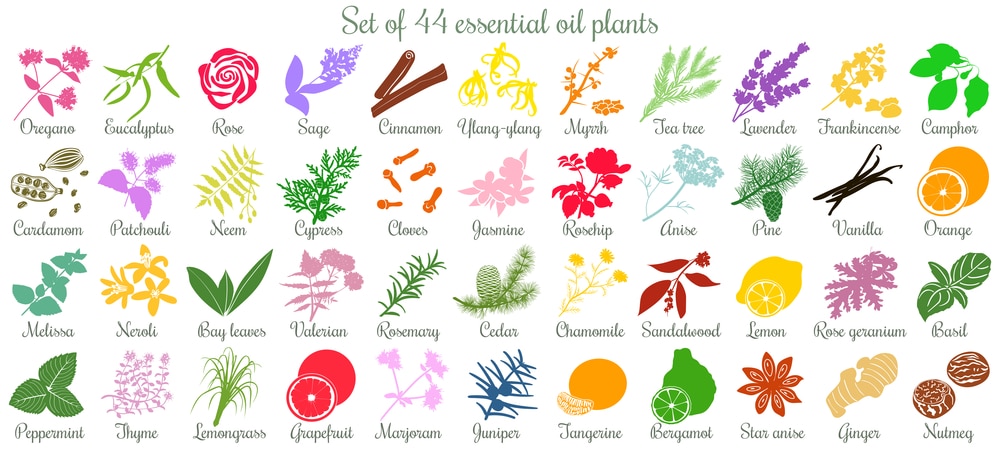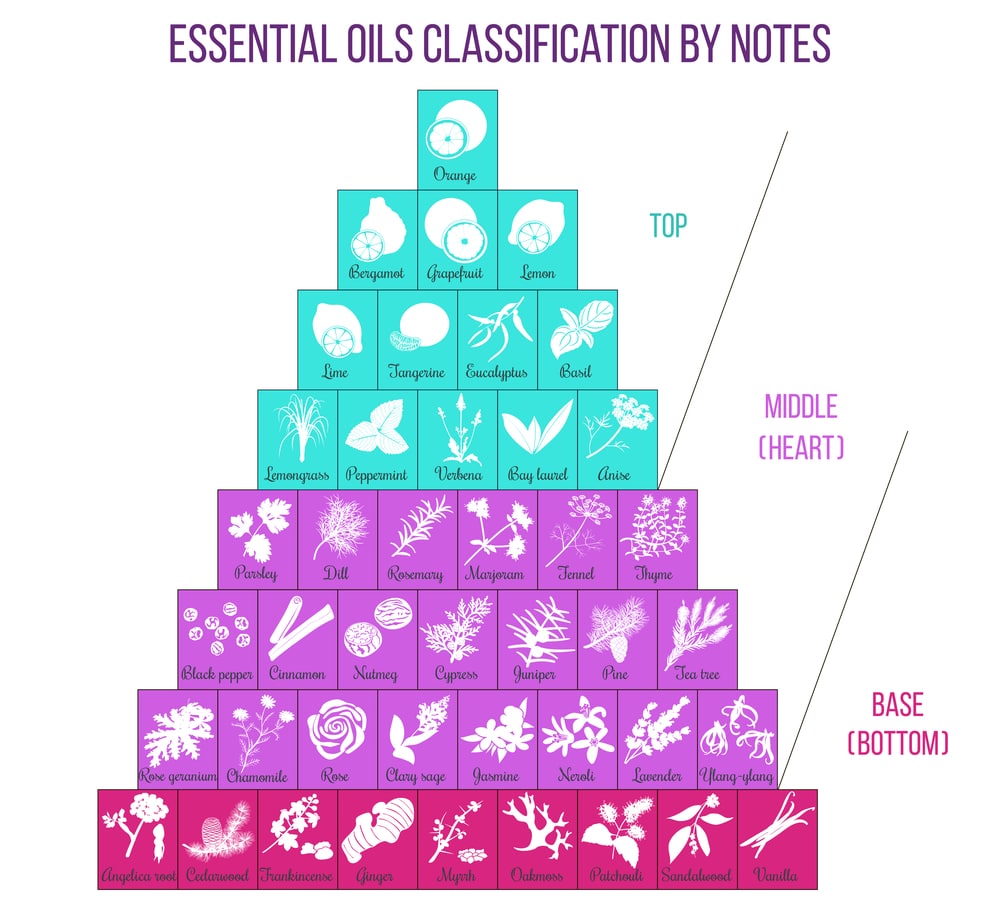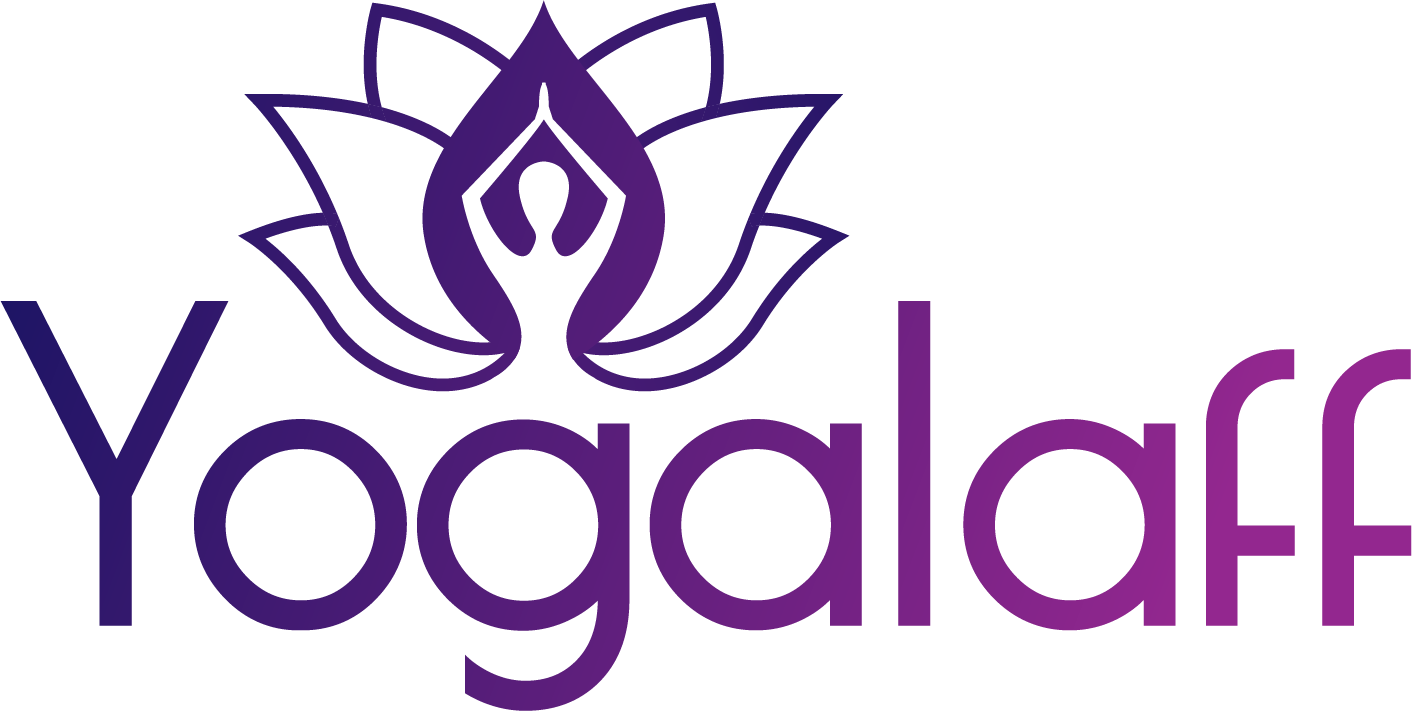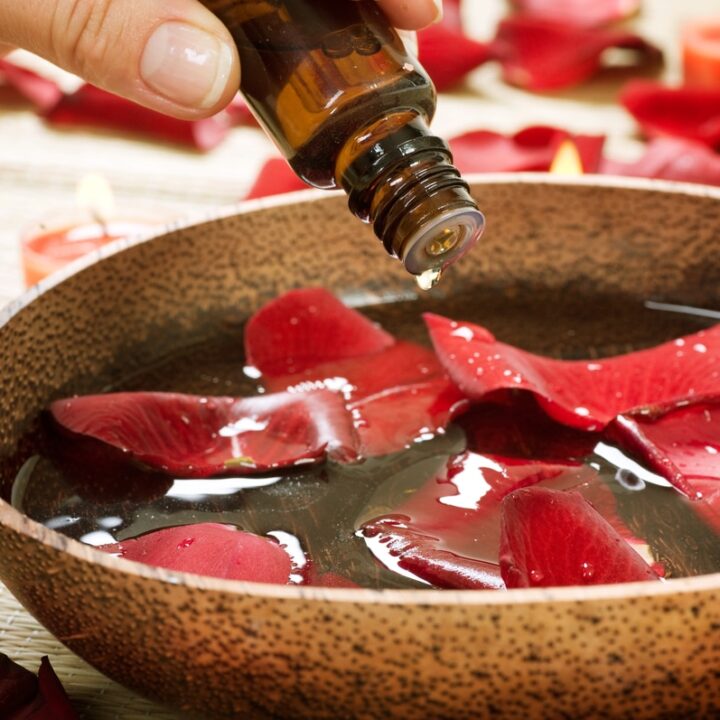Essential oils and yoga separately have their own benefits, but when you put these two together, it is the perfect combination.
There are many different essential oils and people use them for a variety of reasons. As there are many different styles of yoga which people are also attracted to for different reasons.
It is important to know how to use essentials oils safely in yoga class, as well as how to use essential oils for specific purposes and which essential oils to use.
Although each yoga style has its own class description and agenda, there is one common thread that connects all yoga styles together and that is relaxation.
Relaxation can come at the beginning or end, although yoga is meant to do just that – provide relaxation for the yogi.
Yoga is called a practice because we are always on a journey to our higher selves, forever evolving and transforming and as that happens, the yogi’s practice expands.
Adding essential oils to your practice will benefit you in ways that you never imagined. There are many ways to incorporate essential oils into your yoga practice as well as a variety of specific oils to use in your practice to enhance your experience.

20 Essential Oils to Incorporate Into Your Yoga Practice
While you can use any essential oils in your yoga practice there are specific oils that provide specific benefits if used during your practice.
If you want to take your yoga practice to another level and experience new things, adding essential oils to your practice will do the trick. Using these specific oils during your practice can actually enhance the benefits of yoga as well.
1. Frankincense Essential Oil
This oil is known to promote feelings of peacefulness and calmness and is referred to in the oils world as the most spiritually charged oil.
Through the feelings of peacefulness and calmness, your mind becomes stimulated and elevated.
If you have a consistent issue of focusing on yoga, this is the oil to use in your practice to help you stay alert. This is available on Amazon in multiple size bottles.
2. Rose Essential Oil
This oil is known to boost self-confidence, self-worth, and open your heart for a deeper connection.
Rose essential oil is the fragrance of love and can be used in heart opening positions to provide a deeper connection.
If you want to open yourself to giving and receiving more love, this oil can aide in that. Use this link to find this oil on Amazon.
3. Lavender Essential Oil
Lavender essential oil, which is available on Amazon, is an essential oil that provides relaxation for the yogi during class as well as before class.
Lavender essential oil is known as a great starter oil for anyone starting out with oils or yoga. This is a simple oil is great for beginners to use when just starting out because it is soft, subtle and low-key. Click here to find lavender oil on Amazon.
4. Ylang-Ylang Essential Oil
If yogis have massive tension in their bodies, this oil reduces tension and improves flexibility. Some yogis come to class with negative emotions and are looking to release.
The ylang-ylang essential oil, which is inexpensive on Amazon, is good for that release because holding onto negative emotions can lead to anger or frustration. Using this oil during yoga will help to release those negative emotions.
5. Sandalwood Essential Oil
This oil is known to help yogis relax through improving focus and concentration. Focus and concentration are good for any yoga practice.
If yogis use this oil they will experience the fading away of stressors and negative emotions. Sandalwood oil is available to purchase at this link.
6. Peppermint Essential Oil
This essential oil alleviates symptoms of respiratory issues, decreases inflammation, provides the body with properties that assist in muscle recovery.
Muscle recovery may be needed after an intense yoga practice. Peppermint essential oil gives off a cooling sensation after applied to the affected area and many yogis crave this oil when having muscle tension. You can purchase peppermint oil at this link.
7. Orange Essential Oil
All humans have different reactions to stressors and need different things to work through those reactions. This oil is an option for any yogis that struggle with having bad reactions to stressors and can be used before, during or after class.
This oil helps to boost concentration and focus and can prove to be very beneficial if used consistently in yoga practices. You can purchase orange oil at this link.
8. Clary Sage Essential Oil
Most yogis come to their mat to find inner peace because they have trouble finding it off of the mat.
When using this essential oil in a yoga practice, yogis have been known to find inner peace and continue to come back to it. Inner peace not only helps the yogi on their mat but also helps off the mat in their everyday lives. You can purchase clary sage oil at this link.
9. Cedarwood Essential Oil
Yoga is used by many yogis to find grounding in their lives as well as on their mats, in certain poses. This oil helps the yogi feel more connected to themselves and their practice just by the strong scent that this oil gives off.
This oil gives off a potent aroma that is sweet and woody that some yogis are instantly attracted to. You can purchase cedarwood oil at this link.
10. Lemon Essential Oil
This essential oil increases levels of self-esteem and concentration during your yoga practice. Providing a surge of energy for yogis who use this consistently during practice.
Yogis needing a boost of energy and concentration would benefit from using this oil. You can purchase lemon oil at this link.
11. Vetiver Essential Oil
If you come to yoga you are most likely looking for more grounding and earth-shattering connections on and off of your mat. Not necessarily always earth-shattering but connections that strip you down to your core.
This essential oil will definitely give you that feeling when used before or during your yoga practice. An oil that is not always talked about but has incredible benefits when used consistently. You can purchase vetiver oil at this link.
12. Ginger Essential Oil
Grounding and earth-connecting are two words that are mainly used to describe this oil that is in a category all its own. Yoga is a practice for a reason, a practice because you are forever evolving.
Ginger essential oil aids in grounding and connecting to the earth in yoga, which is both integral parts of the practice and both of which are constantly being revisited. You can purchase ginger oil at this link.
13. Patchouli Essential Oil
This essential oil is used in the practice of yoga to aid in grounding and connecting to the earth. There are many poses in yoga that remind the yogi that they must stay grounded in order to focus and safely move to the next step in life.
Using this essential oil will increase grounding and earth-connecting tendencies, which will also assist the yogi off of the mat. You can purchase patchouli oil at this link.
14. Eucalyptus Essential Oil
Certain styles of yoga focus on the connection of breath and poses, the flow of both together are the main goal for those certain styles of yoga.
This essential oil aide in the flow of energy and self-expression, both of which are prevalent while breathing and during yoga poses.
Through breath, yogis learn the benefits of inhaling and exhaling in synchronization and when this oil is incorporated in that, the experience is known to be phenomenal. You can purchase eucalyptus oil at this link.
15. Rosemary Essential Oil
This essential oil is similar to Eucalyptus Essential Oil in the sense that it also aids in the flow of energy and self-expression.
Of course different in its own right, this oil has its own unique scent that provides its own unique style of aiding in yogis learning how to steady their inhalation and exhalation. You can purchase rosemary oil at this link.
16. Geranium Essential Oil
There are some styles of yoga that only focus on relaxation and gentle flows, the poses are less intense and less consistent.
Add this oil into your gentle flow practice at the end to your Savasana pose, inhale and you will instantly feel a wave of calm and relaxation.
Savasana is a pose of stillness and any yogi will definitely benefit from using this oil in this pose. You can purchase geranium oil at this link.
17. Chamomile Essential Oil
Outside of the essential oil world, Chamomile is used to provide feelings of calming, relaxing and mindfulness, after a long day or if you have difficulty unwinding.
Adding this oil to the end of your yoga practice while in Savasana will most certainly provide any yogi with feelings of calm, relaxation and the ability to be mindful. You can purchase chamomile oil at this link.
18. Bergamot Essential Oil
Movement of the body releases endorphins which are necessary and good for us. Our bodies need movement and yoga is the perfect movement for the body.
Not only does it calm the mind, but it also works the body, in many ways.
Using this essential oil will add to the feeling of happiness when endorphins are released by aiding in bringing positivity and more joy to your practice. You can purchase bergamot oil at this link.
19. Neroli Essential Oil
Yoga is not only a journey to yourself, but it is also a journey to others because once you arrive at yourself you can then arrive at others.
Some yogis see the practice of yoga as a spiritual awakening, unlike anything that they have ever experienced before.
This essential oil prides itself in just that – aiding in transcendence as well as a connection to others. This oil can be used in the middle of practice or during partner yoga work. You can purchase neroli oil at this link.
20. Jasmine Essential Oil
Most yogis are attracted to yoga because they are seeking something bigger than themselves.
Transcendence, spiritual expression and having a connection with others are the benefits of using this oil in practice. This oil can be used in the middle of practice or during partner yoga work. You can purchase jasmine oil at this link.
Incorporating Essential Oils into Your Yoga Practice
 Yoga has amazing benefits on its own without essential oils. Essential oils also have their own amazing benefits when used solely for oil purposes.
Yoga has amazing benefits on its own without essential oils. Essential oils also have their own amazing benefits when used solely for oil purposes.
If you merge both the worlds of yoga and essential oils together you will have an incredible experience.
There are many different ways for yogis to incorporate essential oils into their practice that are fairly simple and not too complex. It is important to know your surroundings before using oils during your practice.
If you’re doing yoga at home then you can manage the oils on your own, but if you doing a studio practice then it is crucial to get permission from the yoga instructor.
You’ll want to make sure that the oils do not disrupt the class agenda and you will need to ensure that the other yogis in the room do not have any allergies that will be affected by oils being used.
Essential oils are extremely powerful and beneficial and are considered plant medicine. Oils are used to provide relief on a physical, emotional, health and mental levels, to anyone that uses them properly and believes in their benefits.
Once you have done research on what essential oils to use you can begin incorporating them into your daily yoga practice either at home or at a studio. If oils are used at a studio, you must first speak with the yoga instructor and then with the other yogis in the class to make sure that no one has allergies.
Knowing at what point in class to use the oils is important as well, whether at the beginning, middle or end. There are ways to incorporate oils into your practice during any point of your practice in quite a few different ways.
A diffuser is good to have when starting to use essential oils in class because the scents will not be too strong but instead subtle because they are being released slowly and diluted into the air.
Diffusers require water along with the essential oil in order to begin diffusing. Some diffusers allow you to play music and other soothing sounds while the oil and water are being released into the air.
Using diffusers in yoga class are good because the whole room will be slowly but surely engulfed in the scents as well as the benefits that come with using essential oils. Essential oils are known as dynamic plant medicine that yogis use on and off the mat.
If you do not have access to a diffuser but you still would like to add oils to the studio, you can still incorporate essential oils by spraying oils into the room. Using a spray bottle filled with water and oil or oils of your choice you can spray the solution around the room before, during or at the end of practice.
The fresh scents of different oils around the studio are often times one of the many reasons why some yogis go to yoga class. Spraying the solution on your yoga mat also leaves a nice aroma while you are practicing.
Yogis can also experience the benefits of yoga through a different release, through the air and you are able to inhale and exhale.
Not only can you use essential oils in a diffuser during class, but you can also apply the oils to your skin before you come to class. It is important to use a carrier oil when applying essential oils to your skin because otherwise, the oils will cause skin irritation.
Carrier oils such as coconut oil or even lotion will be the barrier between your skin and the oils. Also, be aware of where on your body you place the oils and the carrier oil and/or lotion because you do not want to slip and slide on your mat if you have too much of anything on your hands and/or feet.
Using essential oils on your skin can enhance your mood before class and can provide relief for areas of the body that are sore and tender. Each essential oil has its own variety of benefits but all of the oils essentially provide comfort for the yogi.
Not only can you apply oils on yourself, but you can also bring the oils to class and with permission, you can use oils on other yogis. Before practice begins you can pass around the oils and tell the yogis to put on their wrists, back of necks, temples, and feet.
Bring a carrier oil or see if the studio has any before having other yogis apply directly to their bodies. Carrier oils are the barrier between your skin and the oil to prevent skin irritation.
You will watch an instant transformation of the yogi once they have come into contact with the benefits of essential oils. It is important to do at the beginning or end of class and of course to ask for permission.
Getting into the habit of incorporating essential oils into your yoga practice can and will enhance your mood, you will see a decrease in stress levels as well as an improvement in your health.
Essential oils promote happiness and well-being for the yogi which in turn trickles down to your life off of the mat.
Final Thoughts
Yoga and essential oils separately have their own benefits but when used together, the benefits are exceptional. You can incorporate essential oils into your yoga practice in many different ways and the use of specific essential oils for each practice is crucial.
If you decide to use essential oils in class, it is important to have permission from the yoga instructor as well as other yogis to ensure that the oils will not disrupt the agenda nor bother any other yogis in class.
Diffusers, spray bottles and applying to the body are ways to incorporate essential oils into a yogi’s practice. Knowing the specific oils to use in the diffuser, spray bottles and on the body are crucial.
Each oil has its own variety of benefits and should be incorporated into practice as needed. If you are applying oils to your body, using a carrier oil will prevent irritation of the skin.
Essential oils are extremely beneficial and yoga has its own variety of benefits.
Both yoga and essential oils are used by yogis to provide relaxation and calmness on the mat but which can also be experienced off of the mat. When essential oils are incorporated with yoga, the yogi will have an experience unlike any other.





















